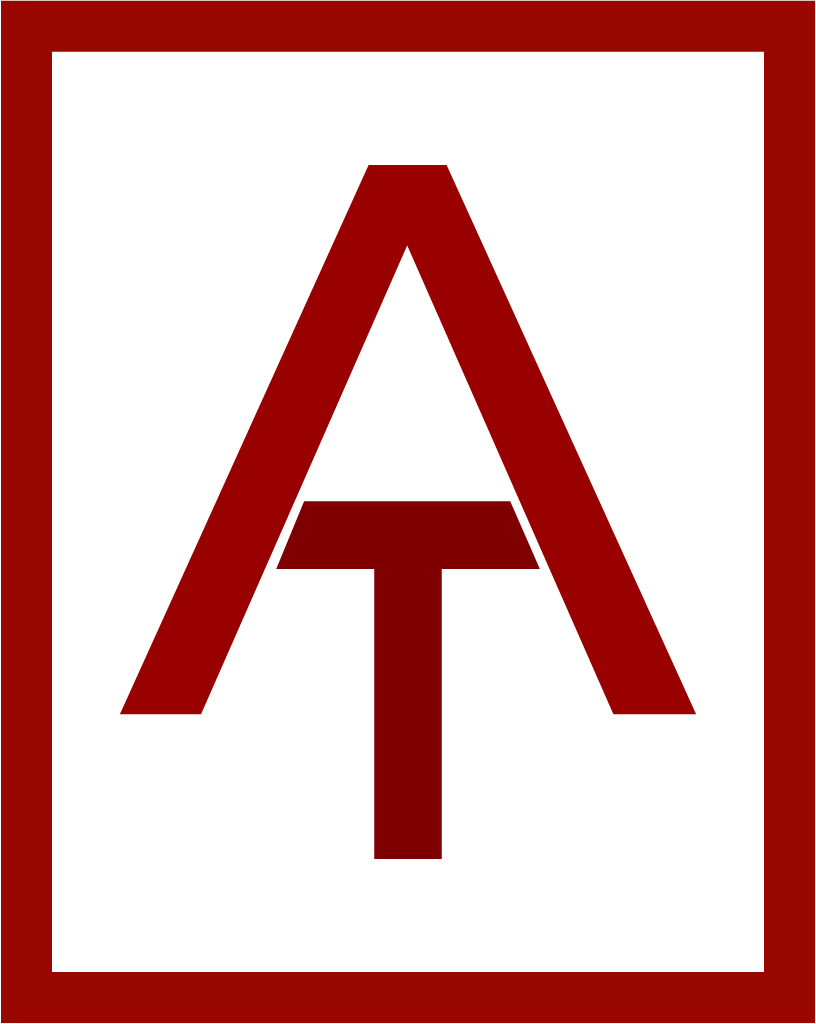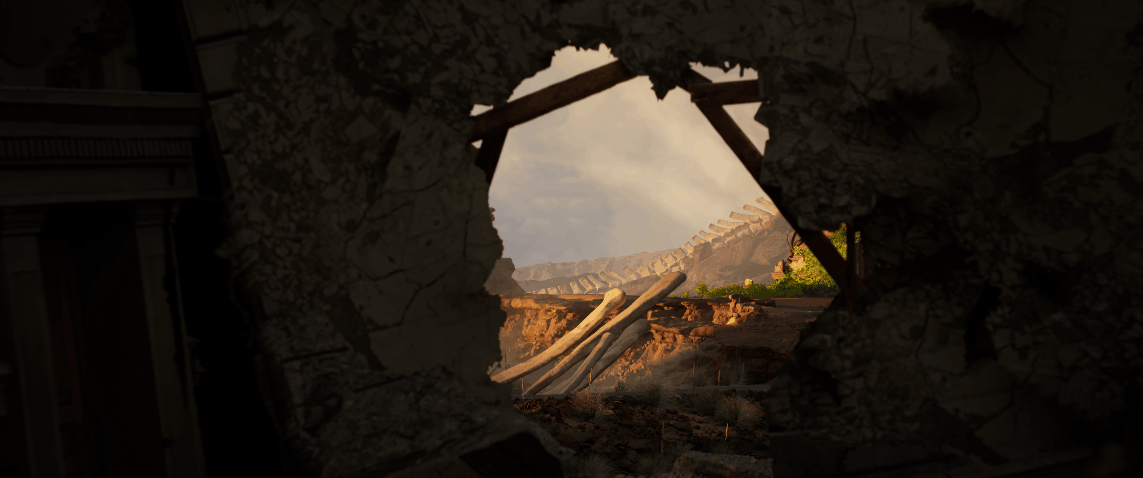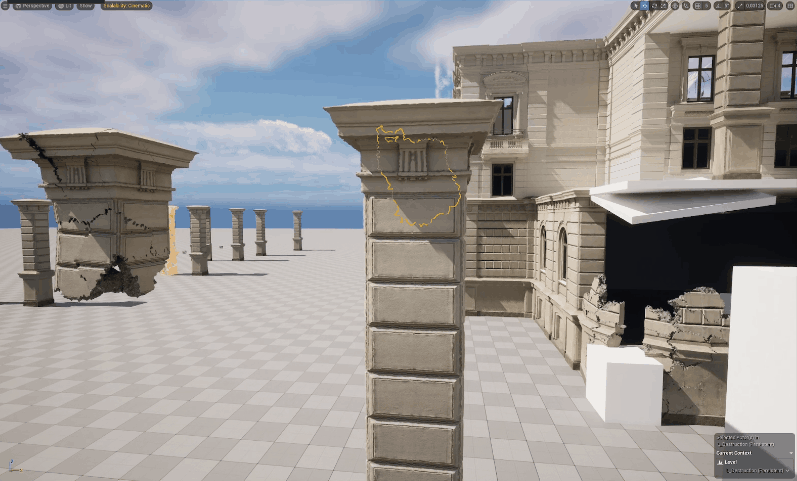WORLD BUILDING FELLOWSHIP
In February 2023, I had the opportunity to be a part of the World Building Unreal Fellowship EMEA.
For three weeks, I learned from the best instructors in the industry. I got to meet and share ideas with wonderful and skilled artists which led to this project.
THE IDEA
The assignement was to create a realtime environment based on random settings determined by a roll of dices.
My settings were: An arid environment featuring the exterior of a neo-classical house made of living organics and in an apocalyptic deterioration level. The genre is war and the visual style is surrealism with a tri-toned color palette applied to several subjects. This scene happens at dawn with a light rain and the surprise twist is Large Creatures.
Combining all those settings was not an easy task but I finally came up with this pitch: “After a long war between humans and large creatures, everything went quiet. However, in the middle of the silence, there’s a glimmer of hope. A strange energy is coming from a destroyed house and is giving birth to life.”
I wanted to represent the tension and conflict between two worlds which is the signature of surrealism and war genre.
THE REVEAL
The video starts by an establishing shot revealed through destroyed houses to set the mood. I wanted to use the key shot of the project as soon as possible while maintaining a sense of discovery as if it was hidden from us in the first place.
THE CLOSE UPS
Though the house was the main focus of the project, I had to find a way to showcase all those settings. I decided the built 3 close-up shots to emphasize the storytelling and key elements of the environment.
THE TENSION
The mystic energy idea came up to me pretty late in the process as I was searching for a way to end the story. I figured that the blue light could embody the life itself. As I wanted to build tension toward climax I introduced a dutch angle while the music intensifies.
THE ENDING
The last shot carries on with the dutch angle and we get dragged by the energy inside of the house.
As the rules were to only use Unreal Engine and no post-production tools, I played with the camera settings like the focal length, the bloom and the chromatic abberation to create this dizzy effect. We end up on a completely white frame as if we were part of the energy.
BEHIND THE SCENE
This project was part of a three weeks training that took most of the days so I only had the evenings to work on it. I got the chance to be in an amazing team that helped me push the whole thing to completion. It was a challenge that allowed me to create the biggest environment I ever done under a lot of creative constraints. I discovered new workflows like world partition, advanced modeling tools, fracture tools, level instances or vdb.
REFERENCES
The words Apocalyptic and Living Organic immediately made me think about The Last Of Us. I decided to use the game as a main reference along with a few desert artworks I found on Artstation. Amongst those, one of Jakob Keudel’s entry for the ninety days video also fitted the Large Creature theme.
IDEAS
Combining all those settings was a headache but I found a way to fit them all while researching about surrealism. As it is depicted in The Garden of Earthly Delights, this artistic movement features a paradoxical component: it gathers things that don’t fit together. I realized that a lot of my settings were contradictory so i decided to emphasize it: contrast or duality would be the main theme of my piece. The house is destroyed but full of green vegetation and benefit from a microclimate (a rainy cloud) in the middle of a red desert. One small detail that also contributes to this contrast is how the start and the end of the video are opposite in terms of tone. We emerge from darkness in a dead place and end up in the light, in a living place.
RESSOURCES
The time I had for the project was very limited so I needed to find as much ressources to help me in the process. I got away with megascans and a few packs in the Unreal marketplace.
Composition
-
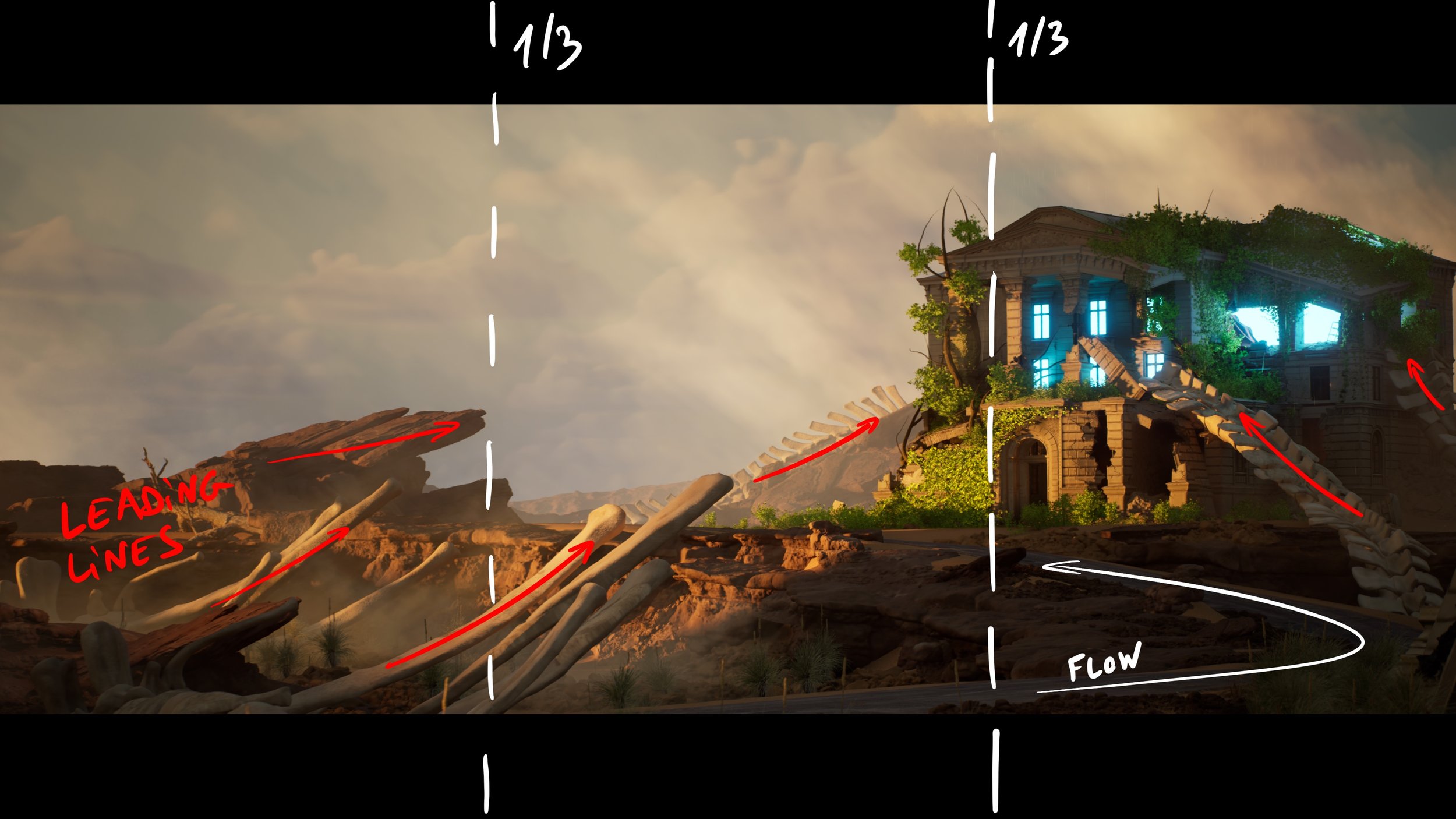
REVEAL
This establishing shot sets the mood and use extensive guide lines to lead the eyes of the viewer toward the house.
-
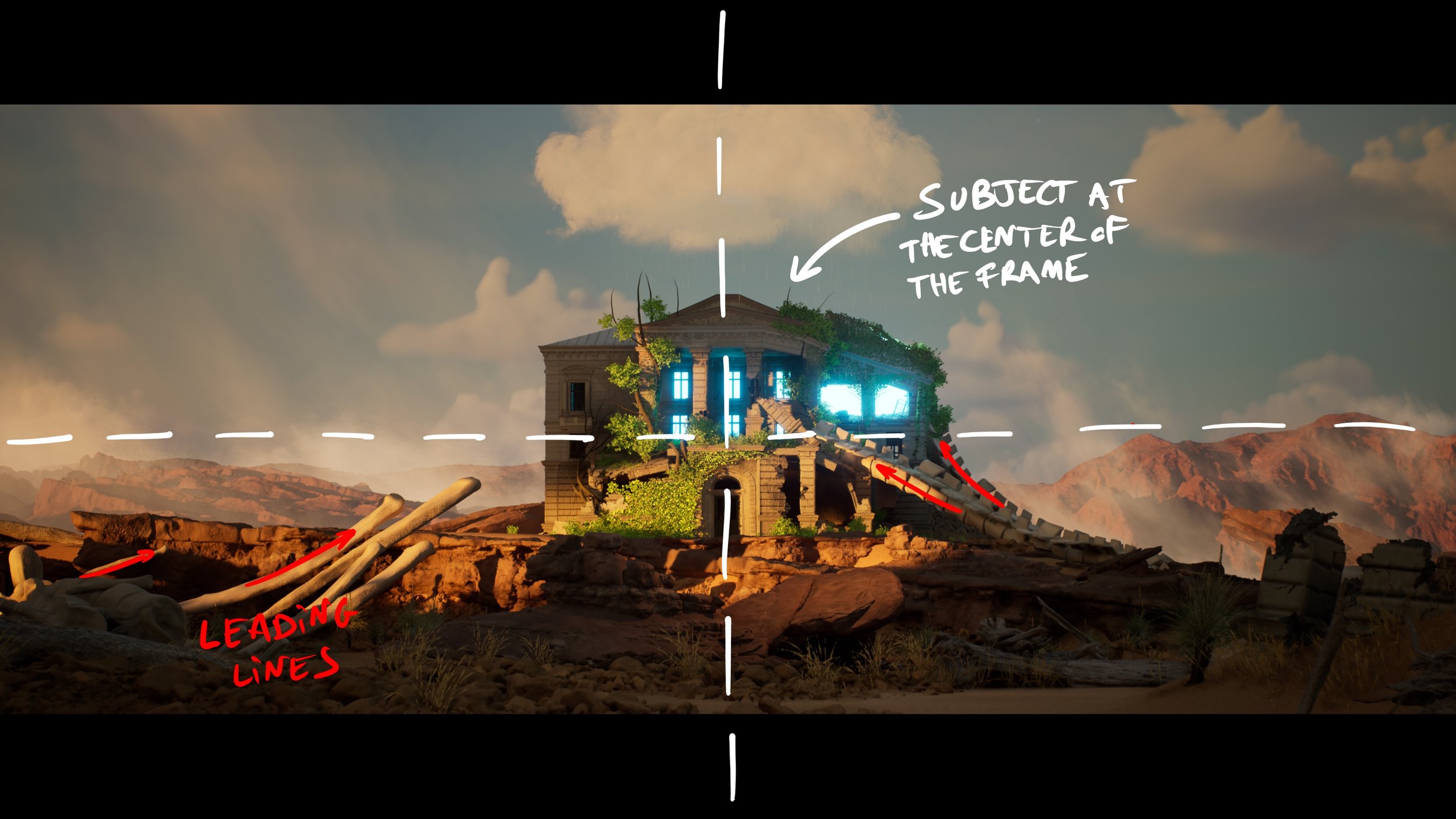
DUALITY
Unlike the previous shot, this one is completely centered and symmetrical. A slight tilt reveals the cloud that made it possible for the vegetation to grow. The frame is divided in two: the earth and the sky.
-

CLOSE UP
Each third in this shot has its own point of interest. The right side is reserved for the house, the left side for the out-of-focus bush and the center for the part of the tree lit by the sunlight.
IN THE VIEWPORT
Everything from blockout to editing was made in Unreal.
The use of spline meshes and plane fog was decisive for the project.
Vary the lanscape height made me save a lot of time by hiding some part of it.
PROCESS
fracture TOOLS
Since Ninety Days came out, I’ve been dying to try the destruction workflow that Jakob Keudel showcased in his breakdown. Modeling and Fracture Tools allowed me to get the post-apocalyptic mood I was searching for my environment.
OPEN VDB IN UNREAL
A new feature I had the opportunity to play with is the OpenVDB plugin. Using a free collection of vdb created in Embergen, I could place volumetric clouds wherever I wanted.
INFOS
CREDITS
DESIGN: Arthur Tasquin
MUSIC: Philippe Tasquin
YEAR
2023
